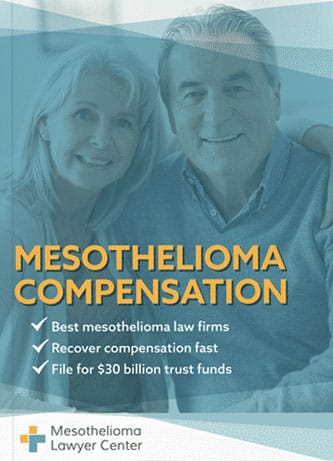Electricians are among the many types of workers at risk of amianto exposure and developing mesotelioma. Although the risk is less now, electricians today still encounter asbestos in older electrical systems and insulation.
If you or a loved one have been diagnosed with mesothelioma, asbestosis, or asbestos-related lung cancer, you may be eligible for substantial compensación. Llene nuestro formulario para recibir nuestro boletín gratuito Financial Compensation Packet. Our packet is loaded with information on experienced mesothelioma attorneys in your area, how to file a afirmar Para fondos fiduciarios de asbesto, cómo recibir el pago en 90 días y más.


Paquete de compensación financiera GRATUITO
- Información sobre despachos de abogados que recuperarán su INDEMNIZACIÓN MÁS ALTA
- Aprenda cómo cobrar en 90 días
- Solicite su parte de $30 mil millones en fondos fiduciarios
About Electricians and Asbestos Exposure
Electricians face several hazards on the job, including exposición al amianto. Electricians can have many duties, depending on their job description. In general, electricians are responsible for:
- Assembling and installing electrical wiring
- Repairing malfunctioning electrical systems
- Connecting wires
- Testing electrical systems
- Preparing blueprints and sketches
- Placing pipes and tubing into walls, partitions, and other areas
Electricians often work with electrical wiring and panels, turbines, generators, and other older equipment made with asbestos. Electrical equipment once contained asbestos for its ability to insulate against heat and electricity and protect against fire.
Asbestos exposure risks for electricians were higher in the past, but electricians today can still be exposed to asbestos. The risk today comes from older asbestos materiales lingering in buildings.
The risk of exposure to asbestos comes from electrical products containing asbestos and other sources. Electricians working on construction sites are vulnerable to the dust created by other workers, for instance, drywallers or painters sanding materials. Asbestos in that dust puts electricians at risk.
What Electrical Products Were Made with Asbestos?
Asbestos was long used in the construction industry because it is an efficient electrical and heat insulator. It also makes materials stronger and was readily available and inexpensive.
As the health risks of asbestos became more well-known and regulations limited it, asbestos use in the industry declined. Before the transition away from its use occurred, many electrical products contained asbestos:
- Electrical cable wraps insulated with asbestos were wrapped or molded around electrical cables. Braided cables also often contained asbestos and covered electrical wires.
- Electrical paper made with asbestos was once used in electrical boxes to prevent fires.
- Electrical shielding shield electrical components and were once made with asbestos cement.
- Generators and turbines were made with asbestos insulation to reduce overheating risks and resulting damage.
- Heating units contained asbestos to prevent heat from degrading electrical wires.
- Plastic panels were often used as electrical shields but also contained asbestos for insulation.
Are Electricians Still at Risk of Asbestos Exposure?
Most asbestos use occurred in the past, but old asbestos materials linger in residential, commercial, and industrial buildings. Electricians today risk exposure to asbestos when working with or around these materials.
For example, a study from 2021 found that electrical arc chutes still in use but made before the 1980s contain as much as 36% chrysotile asbestos.
Electricians remove, manipulate, or even cut apart these materials, exposing asbestos and releasing harmful fibers into the air.
Manufacturers That Supplied Asbestos Products
In the past, numerous manufacturers supplied asbestos-containing products to companies and job sites where electricians worked. Some of the most notable manufacturers that put electricians at risk of asbestos exposure are:
- General Electric (GE)
- Crane Co.
- Union Carbide
- Uniroyal Inc.
- Foster Wheeler
- Uniroyal Inc.
- Johns Manville
- Siemens Energy & Automation
Mesothelioma Risk in Electricians
Asbestos exposure is the only known cause of mesothelioma. Electricians faced risks of inhaling asbestos fibers, which, when lodged in tissue in the respiratory system, can cause mesotelioma, asbestosis, cáncer de pulmón, and other diseases.
Studies confirm the risk and highlight the increased rate of mesothelioma in electricians. In one study, researchers examined mesothelioma markers in over 100 workers, including electricians. Electricians were among the types of workers with the highest risk of having biomarkers that indicate mesothelioma cancer cells.
Another study confirmed a higher-than-average incidence of mesothelioma in electricians. They found that exposure to asbestos comes from electrical products but even more so from being around workers creating asbestos dust during renovations and other work.
Electricians and Asbestos Lawsuits
In May 2012, six people who worked for R&R Electric Corporation filed an asbestos lawsuit in Roane County, Tennessee, after all developed mesothelioma from working around asbestos-containing products.
The plaintiffs, who worked as electrician helpers, sued several government agencies, including the head of the project, the Department of Energy (DOE). The plaintiffs’ asbestos attorney stated that while working,
“The chop saws created thick clouds of fine dust and debris, which completely coated Plaintiffs’ bodies and clothing every day, and which they breathed continuously.”
The plaintiffs were also subjected to a fire in 2001, which resulted in inhaling toxic fumes after a contracting company, BNFL Inc., attempted to burn copper coils and asbestos-containing insulation material.
“The coils were burned in open fires in the BNFL switchyard over a period of a week, creating huge plumes of smoke. On information and belief, the insulating material and wrapping contained significant quantities of ACM (asbestos-containing material).”
While looking over the documentation, the plaintiff’s asbestos attorney discovered that the DOE knew that the materials contained asbestos, according to the organization’s manual.
In July 2011, the family of former Navy electrician David Lanpher successfully won a lawsuit against numerous manufacturers that supplied asbestos-containing products to ships.
According to court documents, Lanpher never received warnings from the manufacturers of the dangers of working around asbestos products. In turn, he developed malignant mesothelioma and died on July 13, 2008.
While working on naval ships from 1954 to 1973, Lanpher handled wiring, engine parts, insulation boards, and many other asbestos products.
Due to the extreme exposure to the toxic mineral, Lanpher’s family received $6.3 million in damages.
Compensation for Electricians Exposed to Asbestos
If you were exposed to asbestos on the job, talk to your doctor as soon as possible. The sooner you get a diagnosis of an asbestos illness, the better the outcome will be. Your doctor can assess your risk and provide early screenings.
If you receive a diagnosis, consult with a abogado especializado en mesotelioma to learn about your options for seeking compensation. Amianto empresas can be held liable for exposing workers to asbestos without providing adequate warnings of the risks.
A mesothelioma lawyer will review your work history to find all the companies that could be held liable for damages. Depending on the companies involved, you might be eligible for a claim with an fondo fiduciario para el amianto or to presentar una demanda to recover damages.
Additional Help and Resources for Electricians
If you’ve been injured by asbestos, there is a good chance that you’ll qualify for considerable compensation. Remember to fill out our form for your free Financial Compensation Packet, with information on asbestos and mesothelioma lawyers in your area.

Pablo Danziger
Revisor y editorPaul Danziger creció en Houston, Texas, y se licenció en Derecho en la Facultad de Derecho de la Universidad Northwestern en Chicago. Durante más de 25 años, se ha dedicado a representar a víctimas de mesotelioma y a otras personas afectadas por la exposición al asbesto. Paul y su bufete han representado a miles de personas diagnosticadas con mesotelioma, asbestosis y cáncer de pulmón, obteniendo indemnizaciones significativas para los clientes lesionados. Cada cliente es fundamental para Paul y atenderá todas las llamadas de quienes deseen hablar con él. Paul y su bufete se encargan de casos de mesotelioma en todo Estados Unidos.
Conéctese con el abogado especializado en mesotelioma Paul Danziger
Referencias
- U.S. Bureau of Labor Statistics. (2023, September 6). Occupational Outlook Handbook. Electricians.
Recuperado de: http://www.bls.gov/ooh/Construction-and-Extraction/Electricians.htm#tab-2 - Agency for Toxic Substances and Disease Registry. (2023, May 19). Where Is Asbestos Found?
Recuperado de: https://www.atsdr.cdc.gov/csem/asbestos/where_is_asbestos_found.html - Blake, C.L., Johnson, G.T., and Harbison, R.D. (2019, August 5). Power Stripping of Asbestos-Containing Insulation from Electrical Cable. Occupational Diseases and Environmental Medicine. 7, 65-74.
Recuperado de: https://www.scirp.org/pdf/ODEM_2019080215282939.pdf - McCoy, M.J., Lewis, R.C., and Mowat, F.S. (2021, January 28). Airborne Concentrations of Chrysotile Asbestos During Operation of Industrial Crane Controls and Maintenance of Associated Arc Chutes. Toxicol. Ind. Health. 37(3), 124-133. doi:10.1177/0748233720986346.
Recuperado de: https://journals.sagepub.com/doi/abs/10.1177/0748233720986346 - Amati, M., Tomasetti, M., Mariotti, L., Tarquini, L.M. Valentino, M., and Santarelli, L. (2008). Assessment of Biomarkers in Asbestos-Exposed Workers as Indicators of Cancer Risk. Mutat. Res. 655(1-2), 52-8.
Recuperado de: https://pubmed.ncbi.nlm.nih.gov/18638565/ - Goodman, J.E., Peterson, M.K., Bailey, L.A., Kerper, L.E., and Dodge, D.G. (2014, February). Electricians’ Chrysotile Asbestos Exposure from Electrical Products and Risks of Mesothelioma and Lung Cancer. Regul. Toxicol. Pharmacol. 68(1), 8-15.
Recuperado de: https://www.ncbi.nlm.nih.gov/pubmed/24189076
